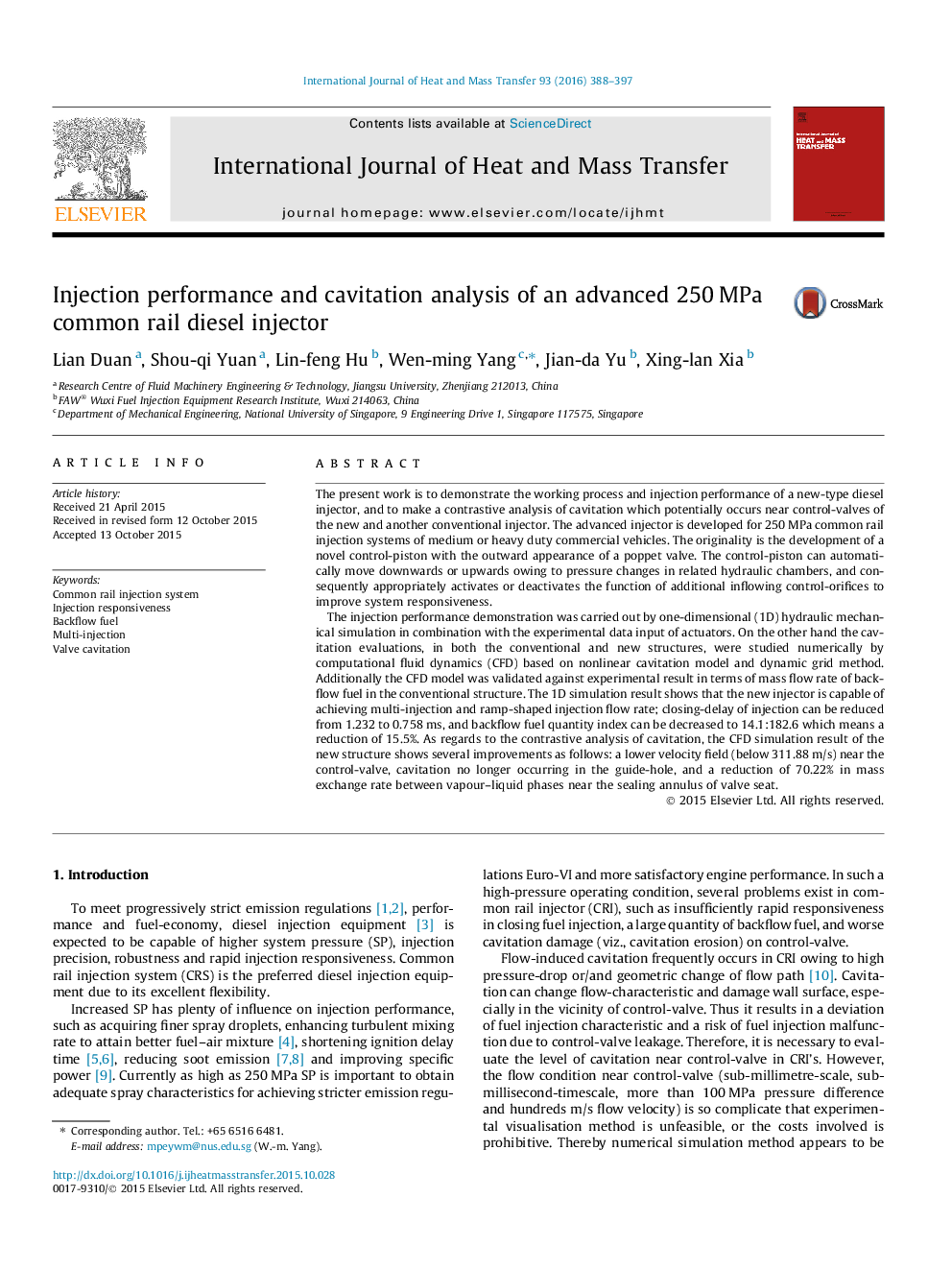| Article ID | Journal | Published Year | Pages | File Type |
|---|---|---|---|---|
| 7056072 | International Journal of Heat and Mass Transfer | 2016 | 10 Pages |
Abstract
The injection performance demonstration was carried out by one-dimensional (1D) hydraulic mechanical simulation in combination with the experimental data input of actuators. On the other hand the cavitation evaluations, in both the conventional and new structures, were studied numerically by computational fluid dynamics (CFD) based on nonlinear cavitation model and dynamic grid method. Additionally the CFD model was validated against experimental result in terms of mass flow rate of backflow fuel in the conventional structure. The 1D simulation result shows that the new injector is capable of achieving multi-injection and ramp-shaped injection flow rate; closing-delay of injection can be reduced from 1.232 to 0.758Â ms, and backflow fuel quantity index can be decreased to 14.1:182.6 which means a reduction of 15.5%. As regards to the contrastive analysis of cavitation, the CFD simulation result of the new structure shows several improvements as follows: a lower velocity field (below 311.88Â m/s) near the control-valve, cavitation no longer occurring in the guide-hole, and a reduction of 70.22% in mass exchange rate between vapour-liquid phases near the sealing annulus of valve seat.
Related Topics
Physical Sciences and Engineering
Chemical Engineering
Fluid Flow and Transfer Processes
Authors
Lian Duan, Shou-qi Yuan, Lin-feng Hu, Wen-ming Yang, Jian-da Yu, Xing-lan Xia,
